#yellow-billed loon
Explore tagged Tumblr posts
Text
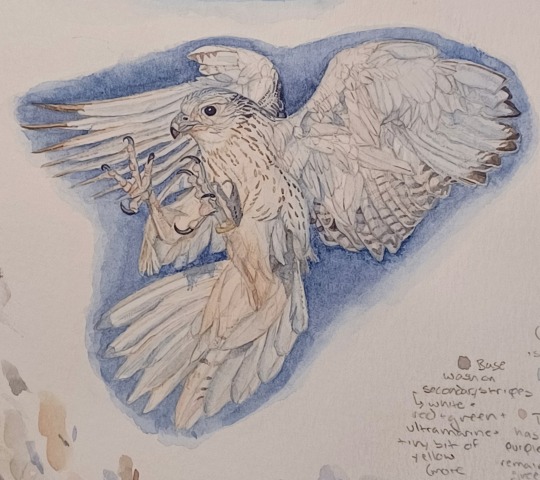


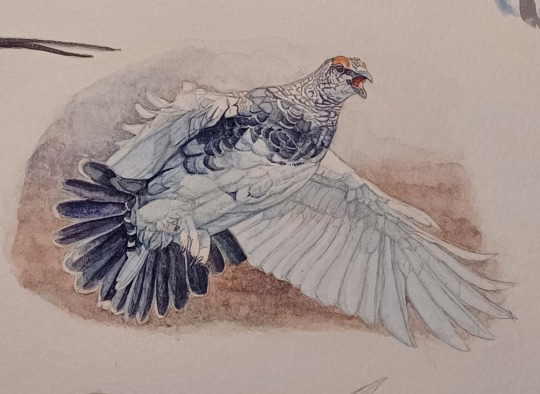
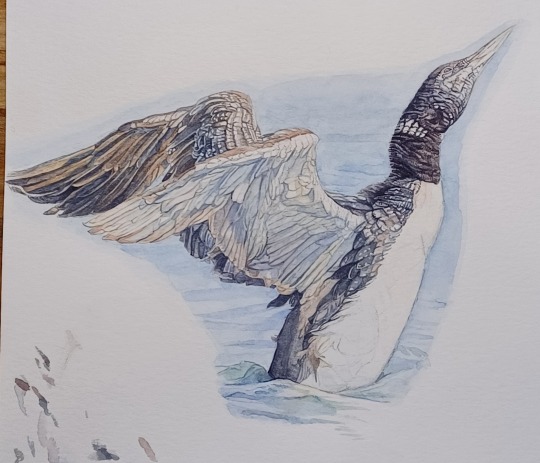
Another round of watercolor bird studies, in preparation for a larger painting. These are all Arctic birds that can be found at/near the North Pole...so you can probably guess the theme of the bigger illustration I'm prepping for ;) Fingers crossed that it will be finished in time for the winter holidays!
#watercolor#watercolor birds#bird art#traditional art#bird painting#watercolor painting#gyrfalcon#long-tailed jaeger#arctic tern#rock ptarmigan#yellow-billed loon#arctic birds#watercolor study#watercolor speedpaint#process
48 notes
·
View notes
Text
Battle Royale
Pool Party! (E-5)
These birds are loosely grouped by their associations with water, and because I didn't want the family BR to get too big. Keep your eyes peeled- there may be someone here who got a little lost, but we don't discriminate here!


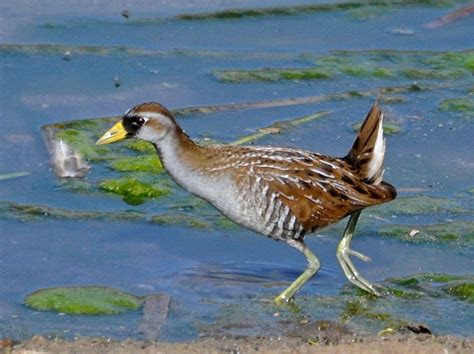



#hipster bird battle royale#BR-E#yellow-billed loon#platypus#purple gallinule#american purple gallinule#sora (bird)#oriental dwarf kingfisher#white-throated kingfisher
43 notes
·
View notes
Text

Simplfied bird #109 - yellow-billed loon
( requested by anon )
#back to once a day bcs i have been struck with what i think is the flu#simplified birds#yellow billed loon#loon#loons#bird#bird drawing#birds#art#drawing#doodle#doodles
323 notes
·
View notes
Text





#polls#birds#animal polls#bird polls#gaviidae tournament#loons#arctic loon#common loon#pacific loon#red throated loon#yellow billed loon#so this is technically not really a tournament since it's just one poll#but close enough
4 notes
·
View notes
Text
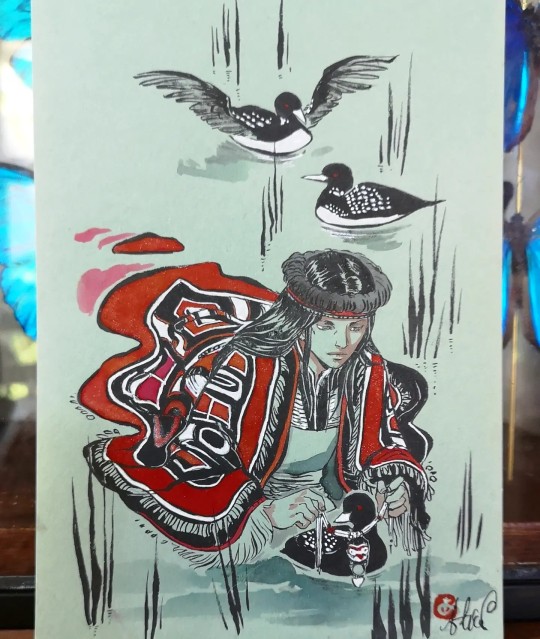
Undying Tales 2 : il s'agit du plongeon à bec blanc. Inspiré d'une légende d'Amérique du Nord
Pentel et encres Jacques Herbin sur papier coloré. , format A5.
Disponibilité de l'original : ✅
Légende du plongeon à bec blanc :
🇺🇲 "The mournful and beautifully poignant cry of the loon can be heard skimming across the waters at dawn and dusk. The Tsimshian people who live in Canada and Alaska have a story of how the loon got its white necklace of feathers. Loon assisted a blind man, restoring his vision by taking him under his wing and swimming swiftly under the mirror clear waters of a lake. After several circuits of the lake, when Loon and the man emerged, his sight was restored. He gifted Loon his traditional Tsimshian necklace, and it melted across Loon’s neck to create the white pattern of feathers around the bird’s ruff."
#plongeon à bec blanc#yellow billed loon#undying tales project#the undying tale#inktober#artbober#inktober2023
17 notes
·
View notes
Text

Yellow-billed Loon
4 notes
·
View notes
Note
do you have any nice alaskan birds? I've been missing my home state lately...
Alaskan Birds:

King Eider (Somateria spectabilis), male, family Anatidae, order Anseriformes, Alaska
photograph by William Pohley

Spectacled Eider (Somateria fischeri), male, family Anatidae, order Anseriformes, Alaska
photograph by William Pohley

Yellow-billed Loon (Gavia adamsii), family Gaviidae, order Gaviiformes, Alaksa
photo: Ryan Askren USGS, Alaska Science Center

Snow Bunting (Plectrophenax nivalis), male in breeding plumage, family Calcariidae, order Passeriformes, Alaska
photograph by Debra Herst

Emperor Geese (Anser canagicus), family Anatidae, order Anseriformes, Alaska
photograph by Sergius Hannan

Gray-crowned Rosy-Finch (Leucosticte tephrocotis), family Fringillidae, order Passeriformes, Alaska, USA
photograph by Alan D. Wilson

Sabine’s Gull (Xema sabini), family Laridae, order Charadriiformes, Alaska
photograph by Audubon Alaska

Black-backed Woodpecker (Picoides arcticus), female, family Picidae, order Piciformes, found in the western US, Canada, and Alaska
photograph by Glenn Bartley

Northern Saw-whet Owl (Aegolius acadicus), family Strigidae, order Strigiformes, found in Alaska, Canada, and the northern U.S.
photograph by Brian Sartor

Willow Ptarmigan (Lagopus lagopus), male, in winter plumage, family Phasianidae, Alaska
photograph via: Bering Land Bridge National Preserve
260 notes
·
View notes
Text
What's the Bird?
Location: Talkeetna, Alaska
Date:

We ask that discussion under questions be limited to how you came to your conclusion, not what your conclusion was.
Happy Birding!
Keep the game alive! Submit a bird HERE
Bird-266 graciously submitted by @alaskannymph
67 notes
·
View notes
Text
Aight HC abt one of my fav jokers
The Ringmaster.

He barley sleeps
often fidgets with his tail when being stressed
He gets quick tempered especially when he hasn’t slept in a few days or hasn’t gotten his morning coffee lol
Bro cries everytime he looks at the electric, faygo and like anything relating to the carnival bills cuz I know that shit gotta be expensive with how the lights be runnin 24/7
He wears the most prettiest yellow robe, just slayin fr
He has a golden tooth (since he lost one from a fight)
His skin feels like wax and he has a hard time picking some stuff up cuz of his long ahh nails
He loves watching Garfield
He’s always running around the circus, pretty stressed and having to keep everyone on schedule.
He and milenko WERE together but their love died out due to lack of communication, this definitely doesn’t impact their future relationships. They’re still alright to eachother though, minus the fact the ringmaster doesn’t like being around milenko for long periods of time and milenko would sometimes flirt with bro dispute him being with RIDDLEBOX at the moment.
He uses like 6 blankets to sleep and four pillows to rest his head.
He had a pet loon he named “loon” not very creative with names rip.
Real talk tho if he gave you a hawk tuah your dingaling is gonna be a peeled carrot cuz of his sharp teeth 💀
His tail is bitten from a fight with someone who tried escaping the wax museum and he has mirror glasses.
9 notes
·
View notes
Text
My birding week vacation is over, so here are all the bird species I saw:
1. Little blue heron
2. Sharp-shinned hawk
3. Black vulture
4. Great egret
5. Sandhill crane
6. Mourning dove
7. Common loon (there were two of them just hanging out at a lake. We couldn't believe it but they were unmistakable)
8. Cattle egret
9. Great blue heron
10. Anhinga
11. Double-crested cormorant
12. Red-winged Blackbird
13. Limpkin
14. Wood stork
15. White ibis
16. Muskovy duck
17. Boat-tailed grackle
18. American crow
19. American coot
20. Common gallinule
21. Common grackle
22. Glossy ibis
23. Palm warbler
24. Osprey
25. American purple gallinule
26. Wood duck
27. Red-shouldered hawk
28. Pied-billed grebe
29. Royal tern
30. Eastern Phoebe
31. Roseate spoonbill (last year it eluded me, but this year I saw two at two separate locations!)
31. Black-bellied whistling duck
32. Tricolor heron
33. Northern harrier
34. Yellow-rumped warbler
35. Tree swallow
36. Swallow-tailed kite
37. Ring-billed gull
38. Turkey vulture
39. Mallard
40. White pelican (there were two just hanging out at an artificial lake in the middle of a residential area)
41. Red eyed vireo
42. Mulard
43. American pekin
44. Mallard/Pekin hybrid
45. Downy woodpecker
46. Grey catbird
47. Blue-grey gnatcatcher
48. Fish crow
49. Northern parula
50. Snowy egret
51. Chimney swift
52. Common yellowthroat
53. Bald eagle
54. Red-bellied woodpecker
55. Blue winged teal (we only saw these guys because we had to walk an extra 1.5 miles to take the long way back to the car because an alligator decided to block our short way back)
56. Great-crested flycatcher
57. Louisiana waterthrush
58. Laughing gull
59. Northern mockingbird
60. Mottled duck
61. Loggerhead shrike
62. White eyed vireo
63. Tufted titmouse
64. Northern cardinal
65. Black and white warbler
66. Ring-necked duck (I saw this lone duck from the car as we were driving past an artificial lake. From it's silhouette I could see it looked different from the other ducks common in the area, so we stopped the car literally on the side of the road so I could run out with my binoculars, and sure enough it was a new species to add to the list. And then when we came back a few days later, it was still there swimming around and diving, so I guess it lived around there.)
67. Carolina chickadee
68. Swamp sparrow
69. Ruby-crowned kinglet
70. Pileated woodpecker
71. Belted kingfisher (we visited the same place three times because my Grandpa saw kingfishers there a few times. It wasn't until the third and final time, while we were ready to give up and leave, that we saw it, perched on a sign post over the water)
72. House sparrow
73. Cooper's hawk
74. Carolina wren
75. White-throated sparrow
13 notes
·
View notes
Text
THE FULL FUCKED UP BIRD BRACKET
All birds have been randomized, the seeds mean nothing. Yes pitohui is spelled incorrectly in the bracket image.
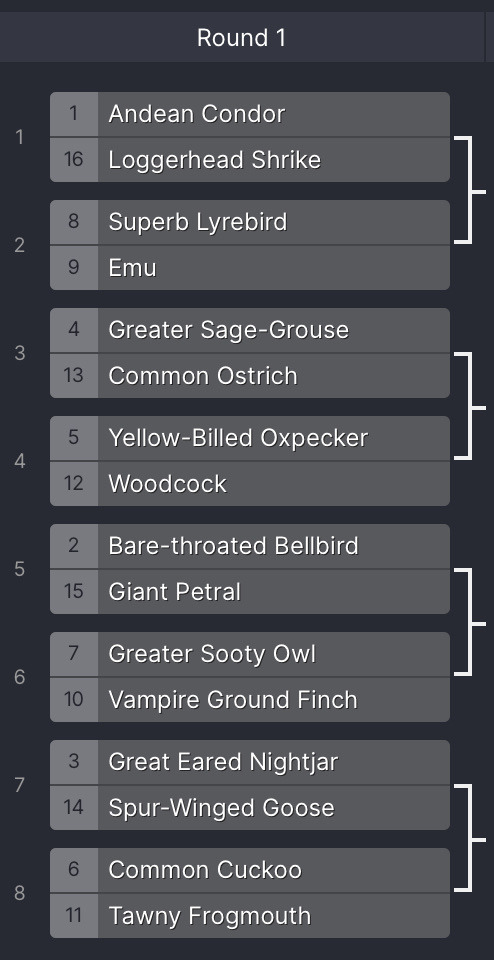
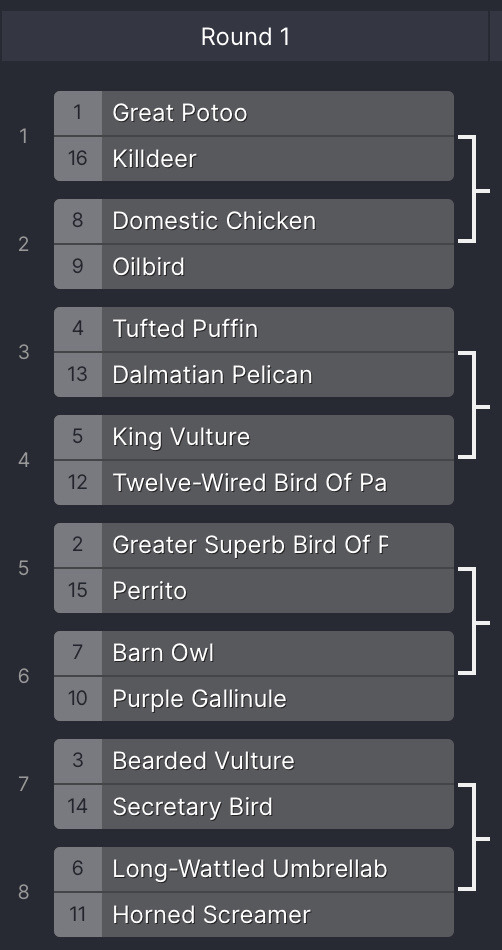

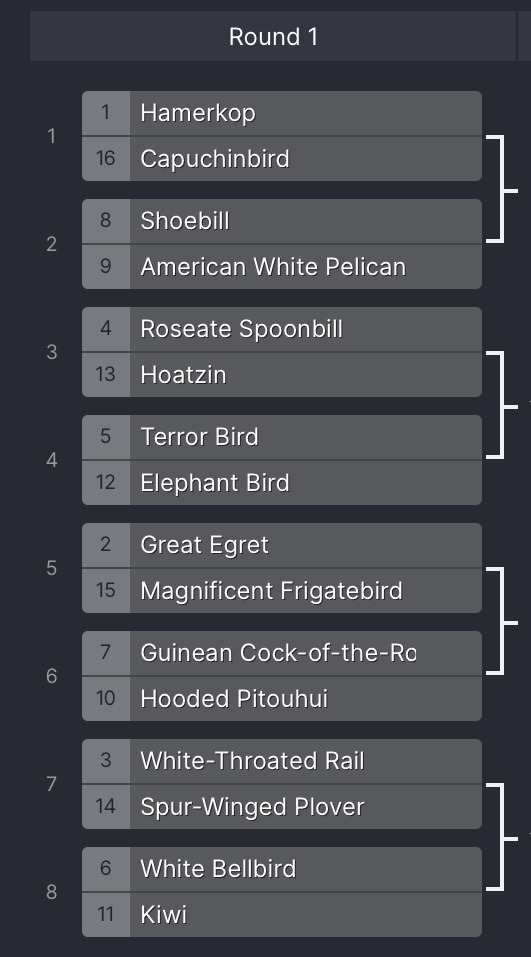
GROUP A
Andean Condor VS Loggerhead Shrike
Superb Lyrebird VS Emu
Greater Sage-Grouse VS Common Ostrich
Yellow-Billed Oxpecker VS American Woodcock
Bare-Throated Bellbird VS Giant Petrel
Greater Sooty Owl VS Vampire Ground Finch
Great Eared Nightjar VS Spur-Winged Goose
Common Cuckoo VS Tawny Frogmouth
GROUP B
Great Potoo VS Killdeer
Domestic Chicken VS Oilbird
Tufted Puffin VS Dalmatian Pelican
King Vulture VS Twelve-Wired Bird Of Paradise
Greater Superb Bird Of Paradise VS Perrito
Barn Owl VS Purple Gallinule
Bearded Vulture VS Secretary Bird
Long Wattled Umbrellabird VS Horned Screamer
GROUP C
Oriental Bay Owl VS Anhinga
Pennant Winged Nightjar VS Snowy Sheathbill
Red-Legged Seriema VS Marabou Stork
Argentavis VS Common Loon
Black Skimmer VS Luzon Bleeding-Heart
Southern Cassowary VS Flamingo (all species)
Green Heron VS Great Hornbill
African Jacana VS California Condor
GROUP D
Hamerkop VS Capuchinbird
Shoebill Stork VS American White Pelican
Roseate Spoonbill VS Hoatzin
Terror Bird VS Elephant Bird
Great Egret VS Magnificent Frigatebird
Guinean Cock-Of-The-Rock VS Hooded Pitohui
White-Throated Rail VS Spur-Winged Plover
White Bellbird VS Kiwi
Polls will be tagged with their BRACKET (example: #bracket a) and #tournament poll
MAY THE WORST BIRD WIN
#information#all of these matchups fucking suck /lovingly#these are literally just all bad bitches being pitted against each other#BRUTAL AS HELLLLLL#mod gf#birdbracket
85 notes
·
View notes
Text
List of Birds organized by Order + locations:
Accipitriformes:
Bearded vulture
California condor
Cooper's hawk
Osprey
Red-shouldered hawk
Steller's sea eagle
Anseriformes:
Bar-headed goose
Barnacle goose
Black swan
Common merganser
Red-breasted goose
Snow goose
Trumpeter swan
Apodiformes:
Common swift
Ruby-throated hummingbird
Bucerotiformes:
Eurasian hoopoe
Cariamiformes:
Red-legged seriema
Casuariiformes:
Emu
Southern cassowary
Cathartiformes:
Black vulture
Turkey vulture
Charadriiformes:
American oystercatcher
Atlantic puffin
Black-headed gull
Black skimmer
Black-tailed godwit
European herring gull
Killdeer
Northern lapwing
Ruddy turnstone
Western sandpiper
Ciconiiformes:
White stork
Columbiformes:
Common wood pigeon
Eurasian collared dove
Luzon bleeding-heart
Nicobar pigeon
Stock dove
Victoria crowned pigeon
Coraciiformes:
Blue-capped kingfisher
Common kingfisher
Cuculiformes:
Asian koel
Greater roadrunner
Yellow-billed cuckoo
Eurypygiformes:
Kagu
Falconiformes:
American kestrel
Common kestrel
Galliformes:
Indian peafowl
Palawan peacock-pheasant
Plain chachalaca
Scaled quail
Western capercaillie
Gaviiformes:
Common loon
Gruiformes:
American coot
Australasian swamphen/pūkeko
Blue crane
Common moorhen
Sandhill crane
Sora
Whooping crane
Passeriformes:
American bushtit
American robin
Australian raven
Baltimore oriole
Barn swallow
Black-billed magpie
Black-capped chickadee
Black-headed grosbeak
Black-throated sparrow
Blue-headed vireo
Blue jay
Bluethroat
Brown thrasher
California scrub jay
California towhee
Canada warbler
Canyon wren
Cave swallow
Cedar waxwing
Chestnut-backed chickadee
Common blackbird
Common chlorospingus
Common raven
Eastern wood pewee
Eurasian blue tit
Eurasian bullfinch
Eurasian golden oriole
Eurasian jay
Eurasian magpie
European robin
Goldcrest
Great-tailed grackle
Great tit
Hooded crow
House sparrow
Indigo bunting
Kirtland's warbler
LeConte's sparrow
Long-tailed tit
Mexican jay
Painted bunting
Phainopepla
Pine siskin
Pin-tailed whydah
Pinyon jay
Pygmy nuthatch
Red winged blackbird
Rook
Saltmarsh sparrow
Satin bowerbird
Spotted towhee
Steller's jay
Tufted titmouse
Wallcreeper
Warbling vireo
Western tanager
White-breasted nuthatch
White-throated dipper
White-throated magpie-jay
Yellow-rumped warbler
Pelecaniformes:
Black-crowned night heron
Brown pelican
Great blue heron
Great egret
Great white pelican
Least bittern
Roseate spoonbill
Shoebill stork
Snowy egret
Phoenicopteriformes:
American flamingo
Chilean flamingo
Piciformes:
Acorn woodpecker
Clark's nutcracker
Great spotted woodpecker
Lesser spotted woodpecker
Lewis's woodpecker
Northern flicker
Pileated woodpecker
Red-bellied woodpecker
Red-headed woodpecker
Podargiformes:
Tawny frogmouth
Podicipediformes:
Pied-billed grebe
Procellariiformes:
Wilson's storm-petrel
Psittaciformes:
Australian king parrot
Chestnut-fronted macaw
Citron-crested cockatoo
Cockatiel
Galah
Gang-gang cockatoo
Pacific parrotlet
Red-masked parakeet
Rose-ringed parakeet
Sulphur-crested cockatoo
Strigiformes:
Barn owl
Barred owl
Eurasian eagle-owl
Suliformes:
Anhinga
Blue-footed booby
Double-crested cormorant
Trogoniformes:
Elegant trogon
Locations:
Africa
America
Antarctica
Asia
Australia
Eurasia
Europe
Oceania
8 notes
·
View notes
Note
Okay I'm genuinely curious. What's your favourite thing about loon birds? :)
Oh, I can't just pick one!
First, their call, the one that starts low, spikes up to a high note, then fades out. Genuinely haunting but oh so beautiful. The best part is that it's not even meant to be sad, it's a way to call out to other loons, "I'm here, where are you?" Like one big game of Marco Polo!
Second, their swimming ability. Their feet are situated on the sides of their body instead of directly under, the propellors of a boat, so their swimming far exceeds that of a duck or goose. (Unfortunately, that also means that their walking ability is nonexistent. They only choose to shuffle up on land for nesting purposes, which is brief. Mother Nature did 'em dirty 😔)
Third, their designs. All four species are rather similar (majority black feathers with white dots and white underbelly) with slight variation, which is self-evident in the names: Common loon, red-throated loon, yellow-billed loon, and black-throated loon. (I'm partial to the common loon, because of the neck band.) With the combo of black and white feathers, it makes their red eyes POP! So eye-catching, so distinctive, when you look at a loon, you know it's a loon.
Fourth, their name. Associated with a silly, perhaps crazy person, but done so in a leisurely manner, rarely an insult and more of a friendly remark.
And last but not least, like many other waterfowl, they carry around their babies on the water like this:

Thanks for the ask!
#loons#waterfowl#common loon#loon chicks#ask#if given the opportunity i would name a loon Watchman#regardless of gender
12 notes
·
View notes
Text
About a day left to vote for your favourite loon!
Vote for your favourite member of the Gaviidae family here.

#gaviidae tournament#polls#birds#bird polls#animal polls#loons#arctic loon#common loon#pacific loon#red throated loon#yellow billed loon
0 notes
Note
Your ocs as birds
ooooh this is gonna make me think! thank you!!
gonna put these under the cut since I'll have pictures and explanations for each of these
Okay well obvious first: Kestrel is literally an American kestrel. Like, that's literally what I based their character on (both physically and in their characteristics), they're a shapeshifter and a kestrel is their main form, it's the whole point. I love these funky lil raptors

Next, her name might be Robin, but she's a canary. They're known for being able to sing two songs at once, which reminds me of her ability. Her story also makes me think of miner's canaries - fully ready to sacrifice herself to save others' lives... but some miners carried resuscitation devices to save the canaries because they got so attached to the birds :) Also, not all canaries are yellow!
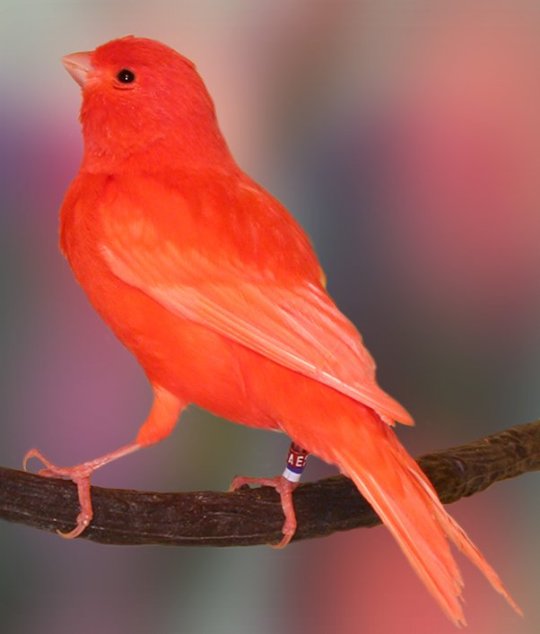
I feel like Rae would be a mute swan. They're supposed to be a symbol of grace, but they're actually deceptively territorial and love to start fights. And they mate for life! If that's not Rae, I don't know what is.
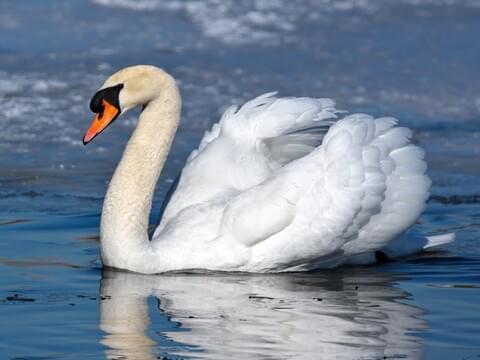
Jasper is a mandarin duck! They're super bright and colorful, which I think suits Jasper well, and they're one of a few species of birds known to change sex from female to male. And while the Mandarin duck isn't known particularly to display same-sex mating tendencies, several other species of ducks are.
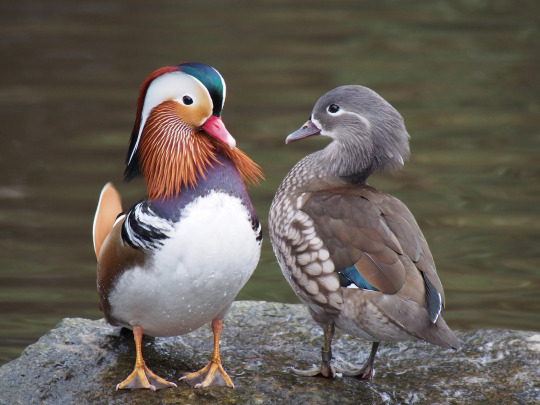
Ophelia is a cassowary for sure. They're big, strong, super fiesty, and they're a species of flightless bird (which in my eyes could represent Ophelia being a superhero without powers of her own, like a bird can't fly). Plus, one of her signature clothing pieces is a navy blue long coat, and the cassowary's feathers reminded me of that.
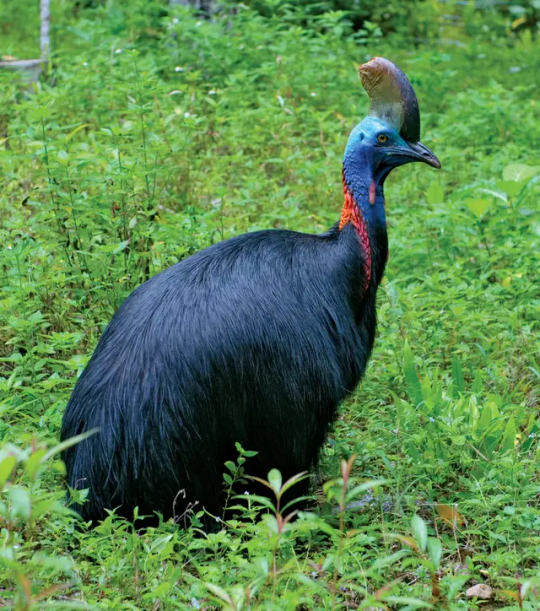
Indigo is an Iranian ground jay. For one thing, their coloration reminded me of her hair, especially with the white stripes on the wings. For another, jays are corvids, so they're very clever birds, but they're not often recognized as corvids since people usually associate the word with crows, ravens, and magpies (i.e. Indigo being very strong and smart of her own right, but rarely being noticed). And as a ground jay, she's "underfoot".
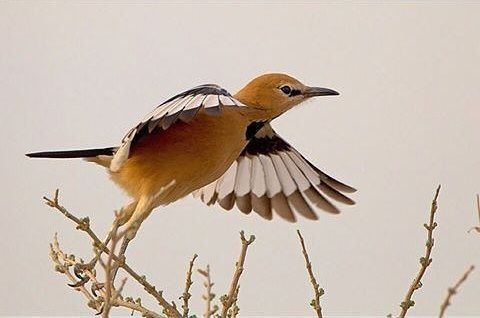
With all the focus on Ancient Egyptian culture and mythology, Katherine has to be an African sacred ibis. They represented Thoth, the god of knowledge and wisdom, and while Katherine herself is more connected to Bastet than Thoth, the connection to Egyptian mythology as a whole means this is absolutely her bird. (though an honorable mention to sun conures, since she keeps them as pets in the fic)
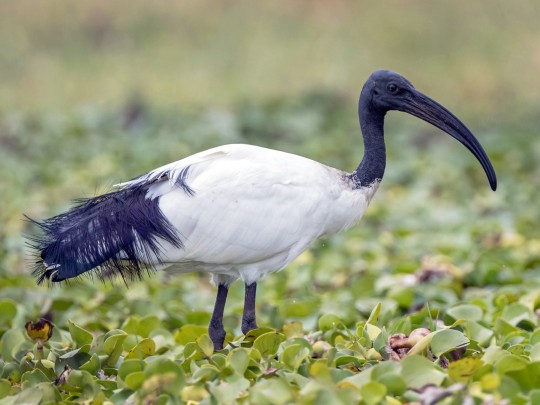
I know I said Prometheus is a phoenix in (Farewell) Wanderlust (and I still stick to the decision that the Corinthian is a barn owl), but I figured I'd pick a real-life bird here just for fun. This was a tough decision, but I went with a slender-billed crow. For one thing, there's a Lenape legend about Rainbow Crow bringing fire to humans and having his feathers burnt black, which reminded me of the legend of Prometheus and his fire in the Greek myths. Crows also form family groups and are even known to hold funerals for their loved ones, which made me think of Prometheus' endless care and compassion for their dreamers. Crows are also linked to Morpheus, and bonus... slender-billed crows are Passerine birds, and we both know Passerine is a total Prometheus song :)

I also struggled a bit with Quinn. On the one hand, I wanted to make her a loon, since they're excellent diving and swimming birds but are physically incapable of walking because of where their legs are positioned (great in their own element, but with disabilities outside it). On the other hand, I wanted to make them a mockingbird, partially for their sharp wit and partially because of their skill with disguises. But in the end, I decided to make her a flamingo: super bright and flashy, almost to the point of being a joke, but shockingly resilient to anything they come across (I mean, look it up, flamingos can survive all kinds of temperature, salinity, acidity, you name it. They're hot pink TANKS)
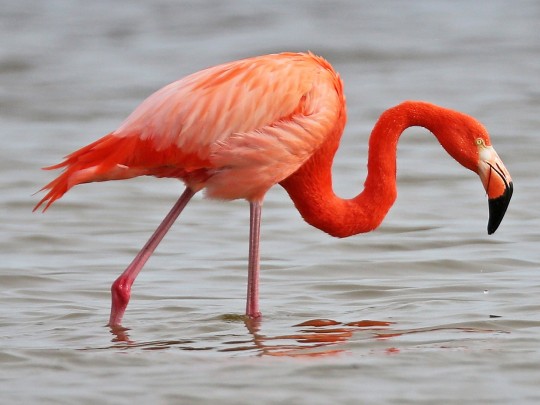
And finally, I know I've compared Madison to a goose in Smoke and Mirrors for her protective nature, and I debated making her a Major Mitchell's cockatoo for their coloration (thank you Odel), but I ended up settling on a red-chested goshawk. Goshawks are VERY protective birds - they can and will attack anyone or anything that gets too close to their young. They're strictly monogamous birds and actually put a lot of care into raising their young. They're strong hunters and are said to be adaptable to their habitat.

thank you for the ask!! this was a lot of fun to think about!
#i'm totally normal about birds i swear (lying)#my friends!!!#answered asks#my ocs#oc kestrel#robin cassidy#rae mckinney#jasper wilson#ophelia octavius#oc indigo#oc katherine johnson#oc prometheus#oc quinn/aces#madison douglas
5 notes
·
View notes
Text

Yellow-billed Loon (Gavia adamsii), family Gaviidae, order Gaviiformes, Alaksa
photo: Ryan Askren USGS, Alaska Science Center
281 notes
·
View notes